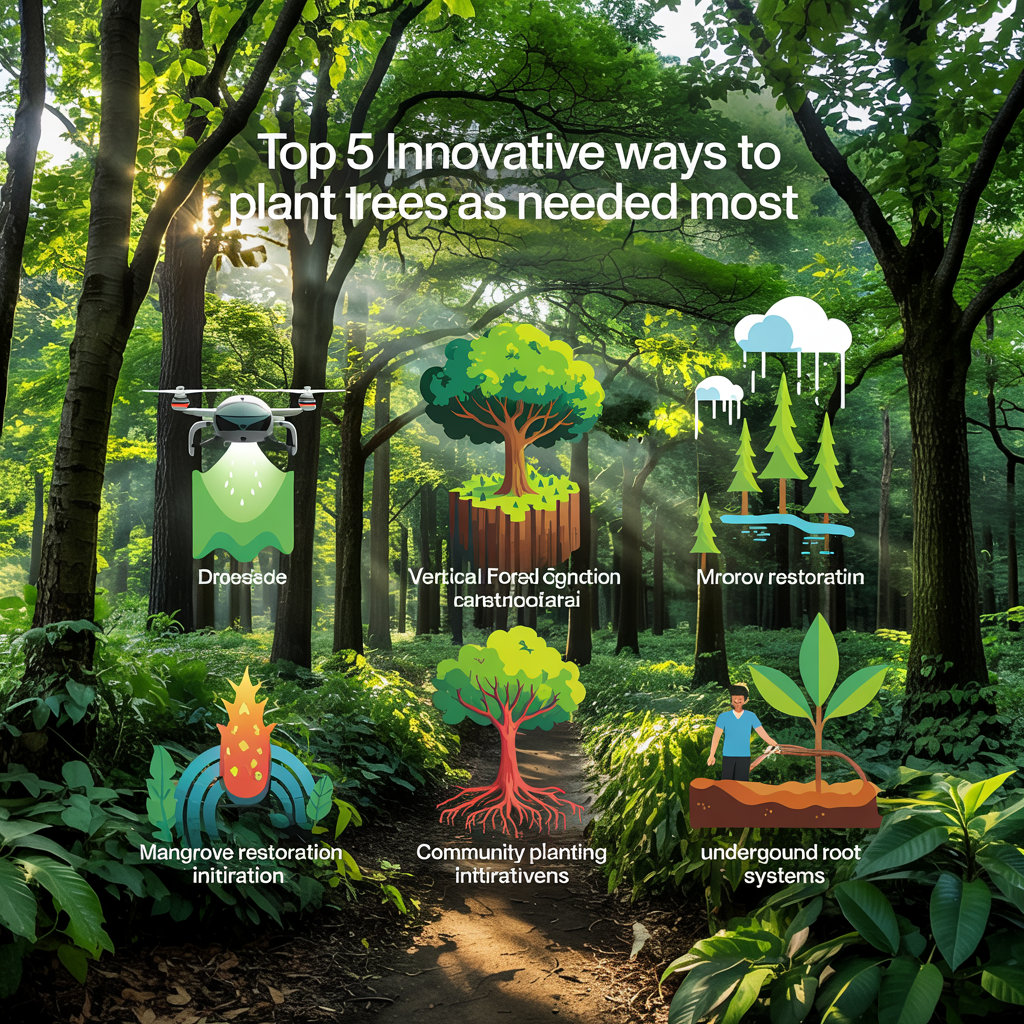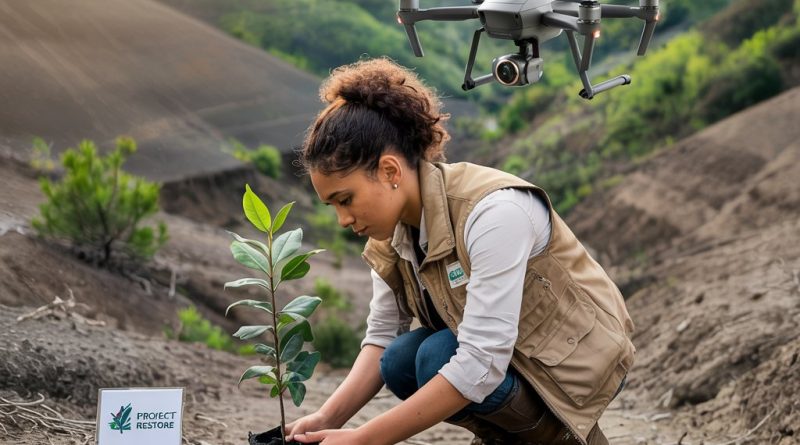Top 5 Innovative Tree Planting Methods
Introduction: Why Tree Planting Needs Innovation and Precision
In today’s rapidly warming world, the call to plant more trees is louder than ever. Trees help combat climate change, restore biodiversity, and improve human well-being. But simply planting trees isn’t enough—we must focus on where and how we plant them to make a lasting environmental impact. Strategic tree planting in high-need areas like deforested lands, degraded ecosystems, and urban heat islands is essential.
Fortunately, new technologies and approaches are revolutionizing reforestation. From drone-assisted planting to ultra-dense urban forests, these innovative tree planting methods are changing the way we re-green the planet. Whether you’re an environmentalist, urban planner, or nature lover, understanding these strategies empowers you to contribute meaningfully to global reforestation goals.
Let’s explore five smart, scalable, and sustainable tree planting techniques that are restoring ecosystems and transforming communities around the world.

1. Drone Reforestation: High-Tech Tree Planting at Scale
What Is Drone Reforestation?
Drone reforestation uses unmanned aerial vehicles (UAVs) to plant seed pods over large or hard-to-reach areas. These drones are equipped with GPS and can deploy thousands of seed “bombs” containing a mix of native seeds, nutrients, and soil enhancers.
Why It Works
Rapid coverage of degraded land and post-disaster zones.
Precision planting through AI and satellite imagery.
Cost-effective compared to manual tree planting labor.
How to Implement
Choose native tree species suited to local soil and climate.
Use drones in combination with ecological surveys for best results.
Monitor growth remotely through aerial imaging or ground surveys.
Case Study: Reforesting Australia and Myanmar
Companies like AirSeed Technologies have reforested vast regions in Australia after bushfires using drone technology. In Myanmar, drones helped restore mangrove forests, a vital defense against coastal erosion and flooding.
2. Seed Balls: Low-Cost, High-Impact Tree Restoration
What Are Seed Balls?
Seed balls (or seed bombs) are biodegradable spheres made of clay, compost, and seeds. Once thrown or scattered onto land, they protect seeds until the rainy season triggers germination.
Advantages of the Seed Ball Method
Affordable and scalable, especially in rural or remote areas.
Minimal maintenance and no digging required.
Engages local communities, making it a great educational tool.
Implementation Tips
Use native and drought-resistant tree seeds.
Ideal for semi-arid or degraded lands with low accessibility.
Distribute before seasonal rains to maximize germination success.
Case Study: Kenya’s Seedball Revolution
Through Seedballs Kenya, over 15 million seed balls have been dispersed by schoolchildren, farmers, and even boda-boda (motorbike taxi) riders, restoring vegetation in places like the Mau Forest and Tsavo region.
3. Miyawaki Forests: Rapid-Growth Urban Forests with Native Biodiversity
What Is the Miyawaki Method?
The Miyawaki method involves planting native tree species close together in small plots, leading to fast-growing, self-sustaining forests that mimic natural ecosystems. These mini-forests mature in just two to three decades, making them ideal for urban greening.
Key Benefits
High biodiversity from multi-layered native plantings.
Rapid growth—10x faster than traditional reforestation.
Ideal for urban reforestation and land restoration.
Steps to Create a Miyawaki Forest
Survey the site and identify native species.
Improve soil with compost and organic material.
Plant 3–5 saplings per square meter and let nature take over.
Case Study: Global Growth of Mini Forests
In cities like Paris, New Delhi, and Tokyo, the Miyawaki method is transforming unused plots into cooling green oases. Organizations like Afforestt in India have scaled the technique to parks, schools, and residential areas.
4. Agroforestry: Sustainable Tree Planting on Farmland
What Is Agroforestry?
Agroforestry integrates trees into farming systems to improve land productivity and sustainability. This can include shade trees, windbreaks, or fruit-bearing species that provide food, fuel, and income.
Why It’s Effective
Restores soil fertility and reduces erosion.
Increases food security and farmer income.
Sequesters carbon while maintaining agricultural output.
Best Practices for Agroforestry
Use species that complement existing crops or livestock.
Adopt practices like alley cropping or silvopasture.
Involve farmers in planning to ensure local relevance and acceptance.
Case Study: Regreening the Sahel in Niger
Through Farmer Managed Natural Regeneration (FMNR), millions of hectares in Niger were restored by protecting naturally regenerating trees. Farmers now enjoy better yields, more shade, and improved water retention.
5. Urban Tree Mapping and Smart Reforestation Planning
What Is Urban Tree Mapping?
Urban tree mapping uses data and geographic tools to identify optimal sites for tree planting. These smart reforestation strategies consider local heat maps, air pollution levels, and underserved neighborhoods lacking green spaces.
Benefits of Smart Urban Greening
Improves public health by reducing heat and filtering air.
Equitable reforestation by targeting low-income or high-risk zones.
Supports tree care and long-term maintenance through tracking.
Tools and Implementation Tips
Use platforms like TreeMap LA or i-Tree to collect and analyze tree data.
Prioritize planting in schools, hospitals, and public housing zones.
Partner with local communities and NGOs for planting and maintenance.
Case Study: MillionTreesNYC
New York City planted 1 million trees in 8 years, using a data-driven plan that prioritized high-need areas. Results included cooler neighborhoods, increased biodiversity, and measurable air quality improvements.
Conclusion: Planting with Precision for Maximum Impact
Tree planting isn’t just a numbers game—it’s a matter of location, strategy, and innovation. The five methods we explored offer scalable, science-backed, and community-friendly solutions to plant trees where they are needed most. Whether it’s drones soaring over fire-scorched hills or school kids tossing seed balls in dry savannas, these approaches are writing a hopeful new chapter for our planet.
As climate challenges mount, it’s vital to move beyond symbolic gestures. By adopting innovative tree planting methods, we ensure that every seed counts and every sapling thrives. Whether you’re starting a community greening project or supporting a global campaign, your actions can take root in the most meaningful way.


